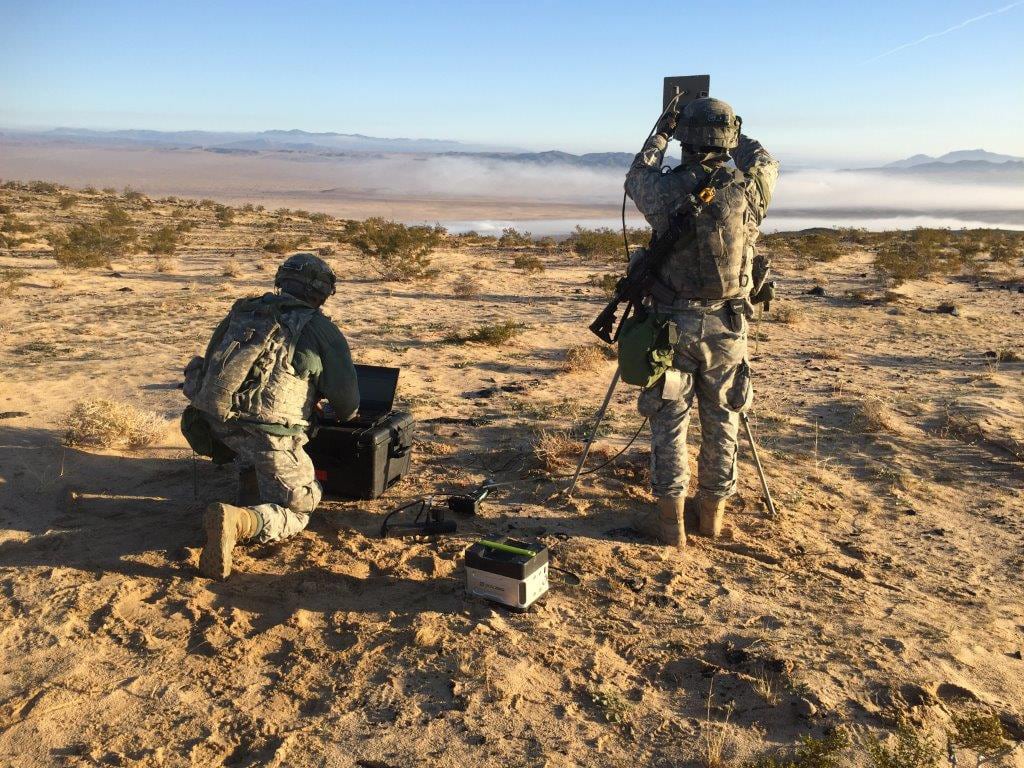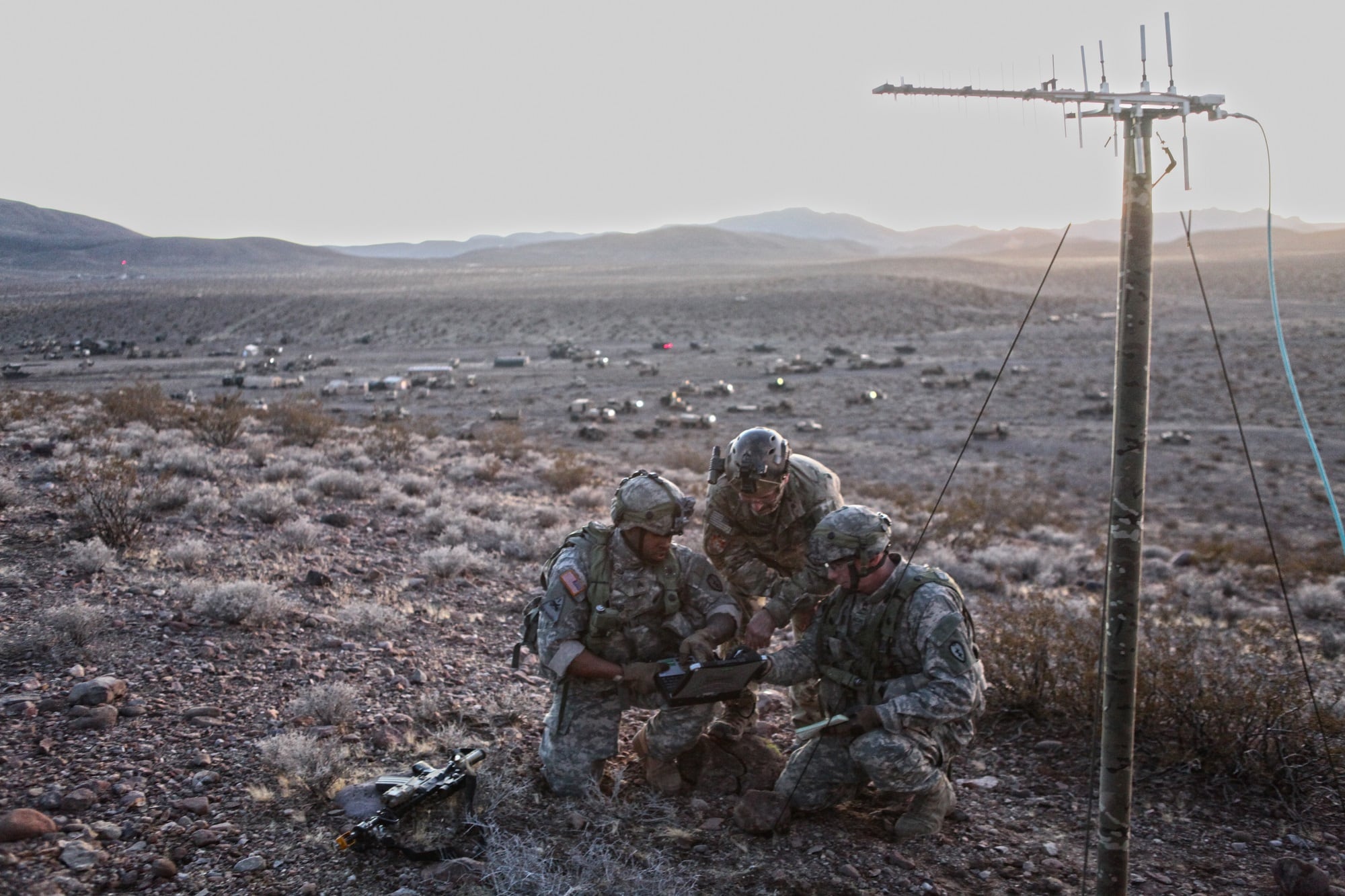AUGUSTA, Ga. — For several years, the U.S. Army has been on a journey to modernize to adapt to the fast-changing nature of the so-called information environment, a vast sphere that includes information, psychological and influence operations across cyberspace, the electromagnetic spectrum and space.
And that’s just the start of the list the Army considers part of the information environment it wants to control.
Adversaries have proven adept at conducting operations below the threshold of armed conflict in this environment to try to subvert U.S. power. National and military leaders are realizing the importance of skills in these “gray zone” operations and during all-out conflicts.
Army Cyber Command initially charted down a path of information warfare, describing the need to integrate capabilities to provide commanders a significant advantage to sense information, understand it, act on it and assess their success faster than the adversary. However, in subsequent years, the Army opted for a different, broader term it is calling information advantage, an approach that leaders hope will help commanders make better-informed, faster decisions that give them an advantage.
For now, the Army is testing the waters to figure out what the idea of information advantage includes and what the service needs to reach that goal.
Officials have said they anticipate the idea will become doctrine soon, and the Army has outlined five core tasks for information advantage: enabling decision-making; protecting friendly information; informing and educating domestic audiences; informing and influencing international audiences; and conducting information warfare.
A shift in thinking has occurred among top Army leadership over the last couple of years: Instead of giving a single command or commander information-related capabilities, the Army is emphasizing information advantage for all commanders, so they can choose the best capabilities available to influence their battle spaces.
“That’s one of the things we talk about in information advantage; it’s really a conditions-based discussion. When we talk about information operations and some of those other things in the past, it was about capability,” Col. Michael Hammerstrom, director of the information project office at the Army Cyber Center of Excellence, said last month at TechNet Augusta. “You had EW, cyber, psyop, OPSEC, deception was all part of that … information operations. We’re moving away from that so we can apply all military capabilities to focus the commander’s mind on the entire operational environment.”
The thinking about information advantage would apply beyond the tactical edge, Brig. Gen. Paul Stanton, commander of the Cyber Center of Excellence, said during a presentation at the same conference.
The service is close to completing an update to its cyber and electromagnetic activities field manual, and the revised version is meant for the entire Army, Stanton told reporters. Soldiers outside the cyber community can read it to understand how cyber might affect their disciplines and how they can use cyber capabilities to their advantage.
“We’re looking at what does it mean to create an ADP [Army doctrine publication] instead of an FM [field manual] that allows us to publish the relevant information sooner so that we can effectively communicate to the whole Army,” Stanton said.

In the meantime, Stanton’s priority is figuring out how to operationalize information advantage.
The Army is still gaming out what all of these ideas would look like in a battlefield scenario. To start, the services have described combining varied capabilities to dispel disinformation using truthful statements, effectively message foreign audiences and inject doubt into adversary systems to affect their decisions.
The Army conducted related experiments in the Indo-Pacific theater this summer.
“What does it mean to combine public affairs with cyber with MISO [military information support operations] with all of the different elements necessary to achieve conceptually what we think are objectives associated with influencing and supporting commander decision-making?” Stanton said. “What are the tangible steps that we can actually do that are then informing an operational commander?”
“When we say ‘operationalizing,’ we’re really talking about achieving objectives that nest within a commander’s scheme of maneuver,” he added.
The Army has struggled somewhat to define information warfare in recent years, with Hammerstrom describing it as “elusive.”
“We’ve tried to define it within EW, cyber, space kind of area, technical side of warfare, but then we have to also bring in psyop and the influence piece into that as well,” he said. “When we jam something, we’re sending a message to somebody on the other end. We’re trying to change behavior of an adversary with those actions that we described.”
Stanton said questions remain about how these ideas work out in practice, including what command and control looks like and what responsibilities fall to a staff section or a command.
The Army is experimenting with two models, Stanton told reporters. During the summer, the service tested giving these responsibilities to a staff section. Next summer, over a series of exercises, it will examine giving them to a command.
The joint connection
The next hurdle is figuring out how to plug these ideas into the joint level, since Army units will serve under the command of a four-star combatant commander. This is especially difficult given that all the services have articulated slightly different lexicon, albeit the same general approach of combining like capabilities for information operations.
For example, the Air Force created a standalone information warfare numbered Air Force that integrates cyber, electromagnetic spectrum operations, intelligence surveillance, and reconnaissance and information operations. The Marine Corps created a deputy commandant for information responsible for overseeing and integrating all aspects of these similar capabilities within what the Corps calls operations in the information environment.
Stanton said a symposium scheduled Sept. 20-21 with the joint community will address these vocabulary challenges and work on integration. Though, informally, he added, many conversations are already happening at the action officer and command level.
Mark Pomerleau is a reporter for C4ISRNET, covering information warfare and cyberspace.





